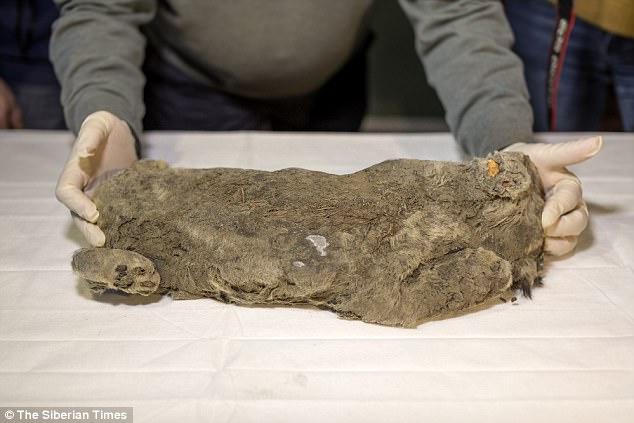Scientists have unlocked a 55,000 year old secret on the tragic fate of two ancient cave lion cubs, while also revealing the species – once the largest big cats on the planet – was surprisingly coloured grey.
The extinct babies called Uyan and Dina were found two years ago in near-perfect condition having been preserved in the Siberian permafrost since the Ice Age.
The cubs were believed to have been a few weeks old when they died, but now experts say the tiny creatures did not have time to be fed by their mother before they perished – no trace of mother’s milk has been found in their stomachs.
They were either abandoned by their mother at birth, or an accident prevented her from caring for her new family in Pleistocene times.
It is also possible that they were buried in a landslide soon after birth since specks of soil were in their food tracts.
‘At first we thought that they were two or three weeks old, but now we are inclined to think that they are only one or two days old – they died soon after birth,’ said Dr Albert Protopopov, head of the department for the study of mammoth fauna of the Yakutian branch of the Russian Academy of Sciences.
‘When the Japanese performed a tomographic scan, it became clear that their stomachs were empty.
‘They did not even have time to try their mother’s milk.’
DNA from these animals may help to revive the lost cave lion species in Jurassic Park-style laboratories, but for now science is gaining valuable new insights into a species known until recently only from skeletal remains and cave drawings by ancient man.
Evidence already gathered from an older cave lion, revealed last month, also buried preserved in Siberia, suggests that the animals were smokey grey in colour, so very different to any modern big cat.














